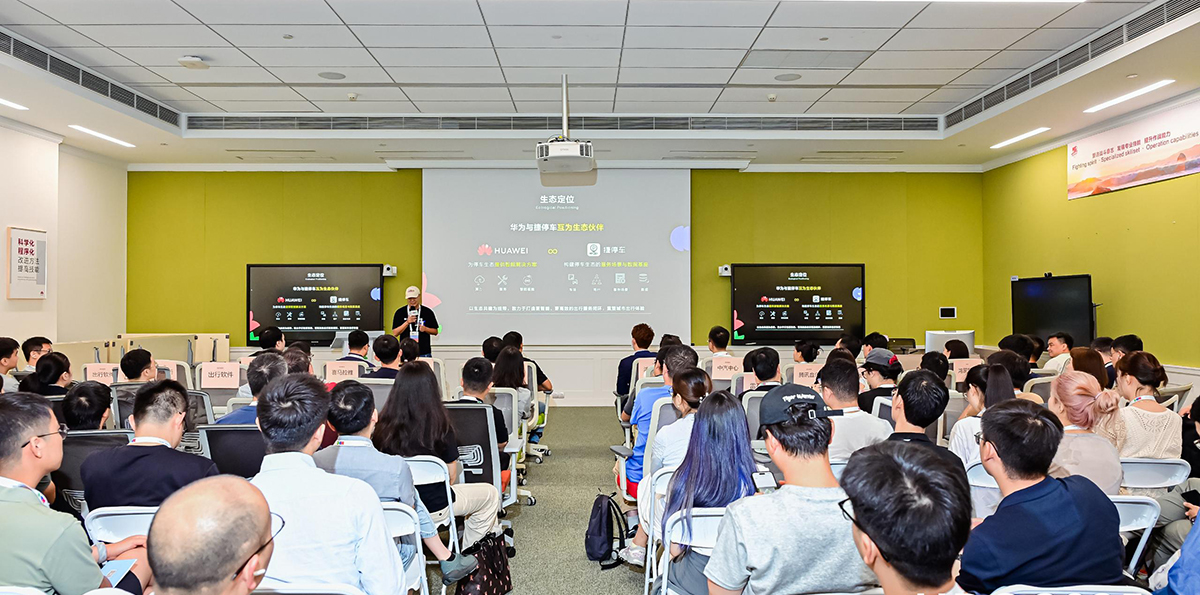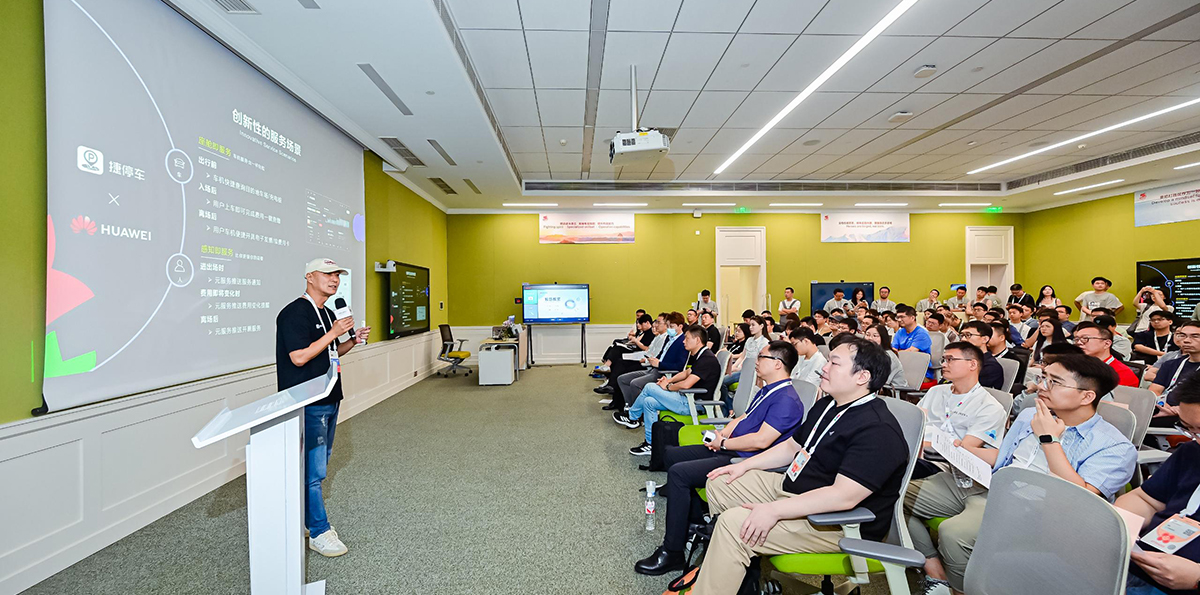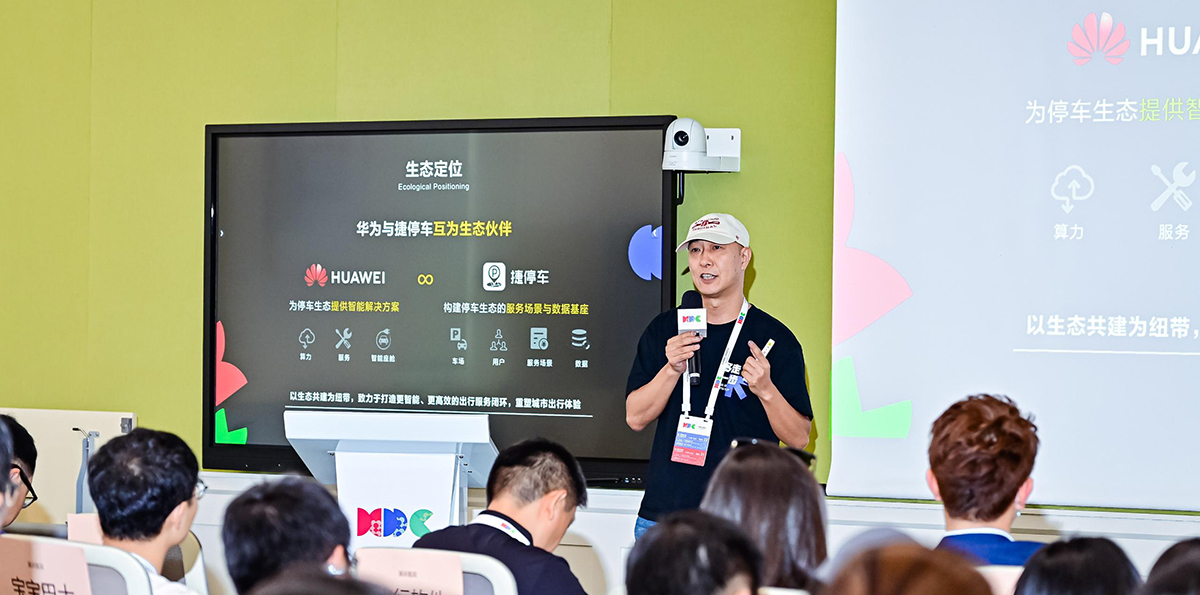About us
Leading in Smart Parking & Access Control
The Huawei Developer Conference (HDC 2025) was held from June 20–22 at Songshan Lake in Dongguan. The event brought together tech elites and industry leaders to unveil the latest developments in technology, ecosystem building, and developer support policies—marking a significant milestone in the rapid advancement of the HarmonyOS ecosystem.
As a key partner in smart mobility, JParking, a subsidiary of JIESHUN, showcased its latest innovations in intelligent parking in collaboration with the HarmonyOS ecosystem. During the keynote presentation, JParking introduced a new generation of smart parking experiences, featuring AI assistant reminders, in-car facial recognition for password-free payment, and a fully integrated in-vehicle payment loop.

From Simple Payment Services to a Full Parking Ecosystem
As a leading one-stop smart parking service platform, JParking has evolved beyond its original role as a provider of basic payment services. It has now transformed into an ecosystem builder, offering comprehensive services that integrate people, vehicles, parking lots, parking spaces, and charging stations.
With over 140 million users and 370 million service trips, JParking has developed a massive data foundation that supports smarter, more connected parking services. By breaking information silos, building interconnected service scenarios, expanding resources, and collaborating with ecosystem partners, JParking has extended the simple act of parking into a complete smart parking service chain.
Features like charging reservations and post-exit payments address a wide range of user needs in one place, revitalizing traditional parking services with innovation and intelligence.

JParking has maintained a close strategic partnership with Huawei for over four years. Together, they are building a smarter mobility ecosystem. Leveraging Huawei’s powerful HarmonyOS capabilities—especially in smart vehicle systems—alongside JParking’s deep expertise in users, facilities, and service scenarios, the two companies are working to create a seamless and intelligent urban travel experience.
As Li Min, Deputy General Manager of JIESHUN and CEO of JParking, noted during the conference's “Smart Mobility” session, this collaboration enables the transformation of city parking services into agile, data-driven “nerve endings” of smart transportation systems.
From “Usable” to “Intelligent Enjoyment”: Innovating Parking Scenarios
Over the course of their collaboration, Huawei and JParking have jointly developed a series of next-level in-car parking experiences:
• Before departure, drivers can quickly search for destination parking lots or charging stations via their vehicle dashboard.
• Upon return to the vehicle, users can instantly view and pay parking fees through the in-car interface.
• Post-exit, functions such as invoice issuance and monthly card renewals can also be completed directly from the vehicle.
But smart parking goes far beyond digital payments. In an era driven by AI and connected services, users now expect smarter, more proactive service experiences. Under the HarmonyOS ecosystem, JParking is delivering just that—offering seamless, full-journey parking services that include reservation, navigation, entry, and exit. This marks a leap forward from simple usability to fully intelligent convenience.
Building the Foundation of a Shared Smart Parking Ecosystem
Looking ahead, JParking will continue to open access to more parking lot resources and real-time data, ensuring deeper integration with the HarmonyOS ecosystem. As Li Min explained, “Ecosystem partners can connect through standardized APIs with one click, gaining access to intelligent resources at low cost.”

From the beginning, JParking’s vision has been clear: “Make parking easier.” With Huawei’s smart driving and intelligent cockpit technologies providing the technical foundation, and JParking delivering robust data support and extensive industry know-how, the partnership aims to bridge the final mile of urban mobility.
In the future, the companies will further collaborate through real-time data interaction, cross-site scheduling, and value sharing, upgrading isolated parking lots into intelligent mobility nodes—the sensory “nerve endings” of a smart city’s transportation network.
A Shared Vision for Smarter Cities
The transformation of parking lots into “traffic neurons” will require coordinated efforts from governments, enterprises, and citizens alike:
• Governments opening data,
• Properties embracing innovative operations,
• Users actively participating.
When these “neurons” are fully connected into an intelligent network, urban parking challenges will be resolved, and both traffic efficiency and quality of life will see a remarkable boost.